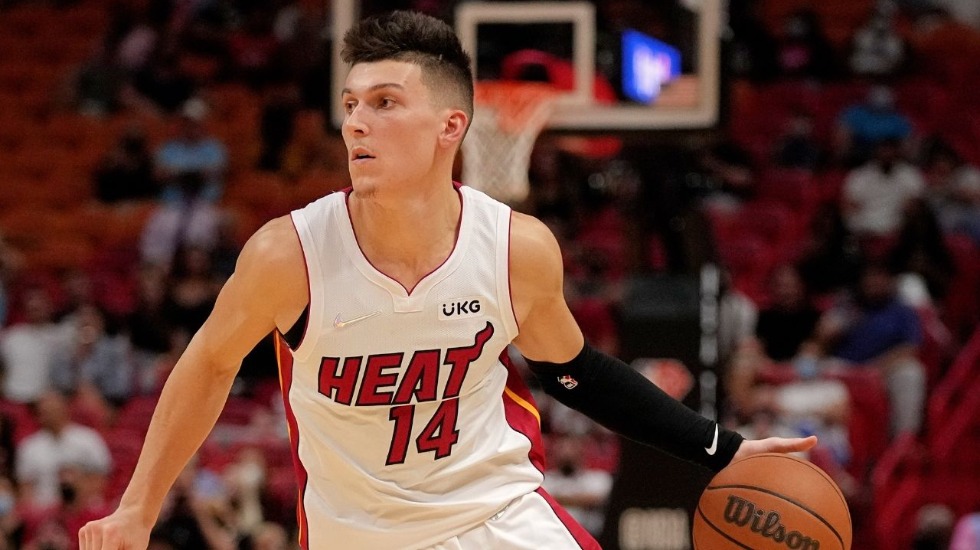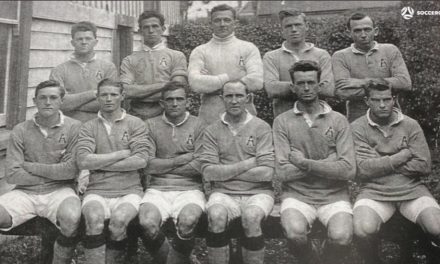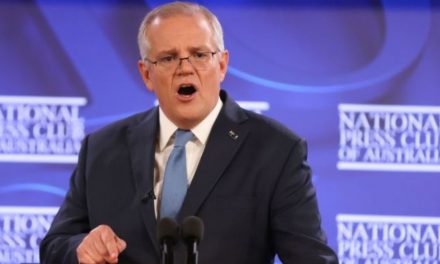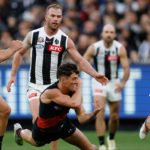Tyler Herro’s early form for Miami Heat this season is backing up his boasting. Photo: THE SPORTS RUSH
We’re a little over a fortnight into the 2021/22 NBA season and whilst we clearly haven’t played enough games to draw any ironclad conclusions about who has found a new level, there are a group of competitors that have clearly upped their game in the early stages of this campaign.
Let’s take a look at a selection of those players.
JA MORANT
Memphis Grizzlies
In his first two NBA seasons, Ja Morant established himself as one of the rising stars of the sport and a potential Face Of The League. The team unexpectedly made the playoffs last season, bloodying the top seeded Jazz’s noses along the way. Led by Ja, the Grizz were a team on the rise.
The upstart Grizzlies lost Jonas Valanciunas in an off season trade and are still missing Dillon Brooks with a wrist injury. With last season’s 2nd and 3rd leading scorers no longer on the floor with him, Ja has more than ably filled the breach, upping his scoring from 19.1 points per game to an even 27, keeping the Grizz afloat.
Ja’s speed and ability to get to the hoop are well established. He’s already snatched a few souls and as a rookie almost buried Kevin.
.@memgrizz rookie Ja Morant tried to end Kevin Love pic.twitter.com/J8Y42QJXTd
— Grind City Media (@grindcitymedia) December 21, 2019
What has set Ja apart this time out is his deep shooting. After shooting a tick over 30per cent from beyond the arc last season, Ja’s hitting 36.6 per cent of his 5.1 deep attempts per game. Whilst that level of shooting is probably unsustainable at this stage of Morant’s development (indeed, he’s gone 4/17 from three in his last four contests) the mere threat of Ja hitting the three at a consistent rate is enough to create the panic of a hard close out. Once that happens and Morant gets downhill, it’s game over.
For what it’s worth, his shooting mechanics do look smoother this season and though expecting him to shoot the trey in the high 30’s is probably too optimistic, if he can settle in at somewhere in the 33-34per cent range, then he’s so much closer to being a complete offensive player and a potential MVP candidate.
MILES BRIDGES
Charlotte Hornets
Charlotte’s 4th year forward decided to bet on himself in the off season, turning down a 4 year $60 million contract offer. At the time, it seemed a calculated risk, but a risk nonetheless. Bridges had shown flashes of star potential as a shot creator but his bread and butter was still solid perimeter defense, stand still threes and dunking with extreme violence.
Whilst wanting him to maintain his penchant for doing the dirty work, coach James Borrego challenged Bridges to expand his offensive repertoire, specifically his ball handling, to become the premier scorer that would benefit from LaMelo Ball’s exquisite play making.
So far, so good.
After averaging right around 13 points over the past two seasons, Bridges has almost double his output to a team leading 24.1 per game, as his usage has increased from 17.3 to 24.7. Borrego has let Bridges cook a little more, evidenced by his 5.1 isolation’s per game (up from 1.8 last season) per Second Spectrum. Whilst he’s not an especially creative ball handler, he’s tightened up enough that when combined with his quick first step, straight line speed and raw power, he’s become a tough man to keep away from the rim.
Bridges is also shooting more threes off the dribble. Whilst he’s not hitting them at anything close to an acceptable rate just yet, the fact that he’s taking them (and that he was reportedly making 1000 off the dribble three pointers per day in the off season) point to another area where Bridges could eventually excel.
Should Bridges keep up this level of production, he’s likely to field contract offers double what he turned down.
TYLER HERRO
Miami Heat
In the opinion of Tyler Herro, Tyler Herro is the future of basketball. Whilst that’s clearly hyperbolic, his form to start the season is somewhat backing up his boast.
After shining as a rookie – especially in the Orlando bubble – Herro was moderately disappointing as a sophomore. That is perhaps not fair on the young man, who did increase his statistical output almost across the board last season. Rather, Herro was guilty of not meeting out sized expectations, more than under performing.
Now, in his 3rd year, the exceedingly confident 21 year old guard is perhaps the early front runner for the league’s 6th Man of the Year award.
His 20.4 points per game rank 2nd on the Heat behind star man Jimmy Butler, but leads the NBA in bench production. Herro’s most noticeable improvements, though, go beyond the numbers.
In his impressive playoff run as a rookie, Herro was red hot, taking and making tough shots with defenders draped all over him. This time around, he’s playing a far more mature brand of basketball. He’s using his versatility as a scorer to take what the defense allows. If you lay off of him, he’ll drain a mid range pull up, if you press up, his ball handling and decision making have improved to the point that he can get to the basket and create for his teammates. He’s still a good three point shooter (37.7 per cent) both off the bounce and in catch-and-shoot scenario’s.
Herro provides a nice counter point to Miami’s stars. Butler is a wrecking ball but isn’t a shooter; Kyle Lowry is more of a distributor at this point of his career, Bam Adebayo is a magnificent facilitator but can’t score beyond the mid-range; conversely Duncan Robinson isn’t a threat inside the three point arc. Herro is developing into a legitimate three level scorer, able to adapt his game depending on the players he shares the floor with.
MO BAMBA
Orlando Magic
An admission: this writer had long lost faith in Magic string bean centre Mo Bamba. Sure, the theory of Bamba made sense. An athletic 7-footer with elastic arms and a decent outside stroke saw the magic dreaming of a rim protecting stretch five. Unfortunately, up to this point at least, Bamba was held back by a combination of injuries and…well…being just a bit shit at this whole basketball caper.
The death knell in Bamba’s hopes as the Magic’s long term centre seemed to come in the form of Wendell Carter Jr, acquired in a trade last season. If anybody tells you they saw Carter and Bamba as long term options in the same front court, rest assured they are telling fibs. Yet, here we are! The Magic, like the Cleveland Cavaliers, have broken with modern convention in starting a pair of centres and it’s somehow working.
Bamba is posting career high numbers across the board: 11.7 points, 9 rebounds, 2.1 blocks and 1.6 threes at 39per cent. Whilst playing 31 minutes – almost double his career high – certainly helps those numbers, Bamba simply looks like an NBA player, now.
He could still stand to get stronger through the legs and hips, but he’s no longer getting moved off his spots by much, much smaller men. That’s allowing his monstrous 7’10” wingspan to alter every shot he gets near. He’s also moving his feet more fluently on the perimeter, allowing him to at least compete with caught in a switch.
That confidence on defence has permeated through to his offensive game, where his theoretical shooting is finally a real thing. Bamba is also making quicker reads, moving the ball around with confidence.
It can, of course, take years for a project player like Bamba to find their feet in the league. It’s taken a while, but we’re finally seeing signs of what Bamba could be in the NBA.
Credit should also go to rookie head coach Jamahl Mosely. The former NBL star appears to have dramatically different opinion on player development that former coach Steve Clifford, allowing Bamba and fellow youngster Cole Anthony to play through their mistakes. So far, both are flourishing.
HARRISON BARNES
Sacramento Kings
The oft maligned Barnes has found a new level at the ripe old age of 29, breaking the 20 point per game barrier for the first time in his career. His team leading 22.2 average is a full six point higher that last season.
Barnes’ progression hasn’t come from any particular skill improvement or usage change, rather it stems from an alteration to his shot distribution. After attempting 4.4 shots from beyond the arc last season, Barnes has upped that all the way to 6.8. Combined with a hot shooting start (45.9 per cent up from 39.1 per cent last campaign) those extra long makes have turned him into a legitimate sniper.
The added bonus of that deep shooting is that defences are closing out on Barnes far harder than they previously have. That, in turn, has seen Barnes attacking a scrambling defense resulting in him shooting an extra 2.5 free throws per game this season.
Given his age and the sharp increase in three point accuracy, Barnes’ improvement practically screams ‘unsustainable’ but even so this new shot distribution is a positive step for a Kings team that has a deep and talented guard rotation, desperately needing the space that Barnes playing as a stretch-4 can provide.
You can also view Jarrod’s work at leading independent sports media site Vendetta Sports Media












Young Jordan Poole at the Warriors has stepped up big time too.
Exactly what they’ve needed in Klay’s absence. If Klay can be effective when he comes back, the Warriors could be a genuine threat.